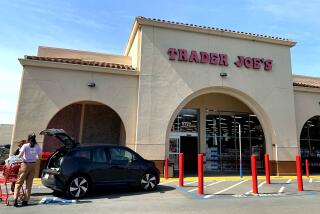14-year-old hamburger free of mold? McDonald’s says it’s no big deal
A 14-year-old hamburger -- seemingly perfectly preserved, looking like it just hopped off the grill -- has left McDonald’s with a lot of explaining to do.
The fast-food chain says the apparent lack of mold or disintegration is actually no big deal, and suggests that the burger’s pristine appearance -- assuming it’s not a prank -- is likely the result of dehydration, and not funky preservatives.
The hamburger has been in the headlines of late, most recently on “The Doctors.” Dr. Travis Stork donned medical gloves to examine the McDonald’s hamburger that looks barely an hour old, even though its owner claims he purchased it over a decade ago.
Photos: 17 over-the-top garlic dishes
David Whipple of Utah says he still has his receipt to prove his purchase back on July 7, 1999. He said he forgot about it in a coat pocket until it was found later by his wife. “We said “Oh my gosh, I can’t believe it looks the same way.’”
Whipple must have known he was on to something, because he kept it. At one point, he tried to sell it on EBay, but mostly he trots it out on occasion for the media. He told a St. George, Utah, newspaper that the patty -- dubbed the “World’s Oldest Hamburger” -- has never been refrigerated.
“How can it not be moldy?” someone on “The Doctors” panel exclaimed while Stork examined the burger. “It’s called ‘preservatives,’” responds pediatrician Dr. Jim Sears. “If the mold won’t eat it, if the fungus won’t eat it, bugs won’t eat it. Maybe... we shouldn’t be eating it.”
Not so fast, McDonald’s says.
It offers a different perspective via an extensive press release that just might be the most science-y press statement in the burger giant’s history.
“McDonald’s hamburgers are freshly prepared in our restaurants. While not knowing the conditions in which the food was kept in this specific claim, what is scientifically known is that in bacteria and mold only grow under certain conditions,” the statement begins.
McDonald’s goes on to say that many other foods purchased and kept in a dry environment would hold up the same.
“For example, without sufficient moisture – either in the food itself or the environment in which it is held – bacteria and mold and associated decomposition, is unlikely,” the statement says. “If food is/or becomes dry enough, it won’t grow mold or bacteria. In fact, any food purchased from a restaurant or grocery store or prepared at home that lacks moisture would also dehydrate and see similar results if left in the same environment.”
We interrupt this press statement to add: Let the food experiments begin!
In closing, the McDonald’s press statement goes on to say there’s nothing tricky about the patties’ ingredients:
“McDonald’s hamburger patties in the U.S. are made with 100% USDA-inspected beef. They are cooked and prepared with salt, pepper and nothing else -- no preservatives -- no fillers. Our hamburger buns are made from North American-grown wheat flour. These are the same foods that people buy every day in their local grocery stores.”
What do you think? Will this make you think twice about hitting the drive-through? Do you think that McDonald’s is getting a bad rap?
ALSO:
Burger King delivers -- in Glendale
Food photography tip: Ingredients as props
More to Read
Eat your way across L.A.
Get our weekly Tasting Notes newsletter for reviews, news and more.
You may occasionally receive promotional content from the Los Angeles Times.







